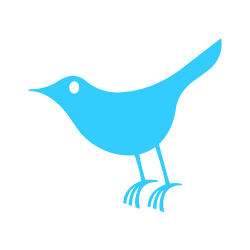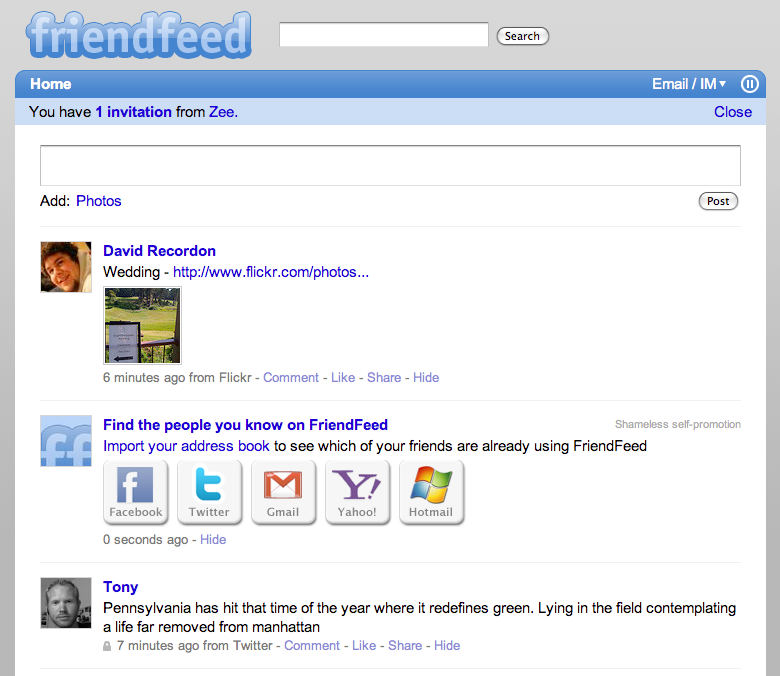Is Twitter Successful?
It depends, of course, on your definition of success.
The big question everyone has with Twitter is, and the very first one that John Battelle asked Twitter CEO Ev Williams when he interviewed him yesterday, is “What’s the revenue model?”

And the answer Ev gave is exactly the same one they’ve been giving for a year now, which essentially is: “We’re not focused on revenue. We’re focused on growth”. When you hear a CEO say something like that, you know a lot of people’s reaction will be “They’re doomed. They’re a flash in the pan. They’re not successful yet, etc”.
But Twitter is not playing at the $1.00 blackjack table. They’re playing at the $1B blackjack table. Forget for a moment that Twitter has smart investors and they’re very aware of what’s going on at the company and that if they wanted revenue over growth right now things would be different.
The fact is that Twitter has made the business decision to focus on growth over revenue. That’s their prerogative. If you disagree with that choice, that’s one thing. But you can’t say that Twitter is unsuccessful because they haven’t made money yet. They’re not trying to! You end up measuring apples while they’re growing oranges.
There is another side to this story, the story of how Twitter makes design decisions to support its business goals. When I hear Ev say that they’re focused on growth and not revenue, from a design standpoint I think…they’re doing a damn good job! I think Twitter is very successful in this regard. Why? One simple reason…
Twitter aligns design decisions with actionable business metrics.
This sounds straight-forward, but it’s really hard to do. In fact, most companies fail to do it. Most companies fail to consistently align their design decisions with their business metrics. There are many reasons for this, including unclear business metrics, unclear design direction, politics, competing factions, and simply not knowing how. (I wrote What metric are you designing to improve today? as a result of my frustration with this)
In Twitter’s case, their overall growth metric most likely includes some version of the following:
- Sign-up: (number of new user sign-ups per day/week/month)
- First-time Use: How many people actually start using the service. (one or more tweets)
- Use over time: A measure of how many of those users stay and use the service over time (often done with a cohort analysis)
- Engagement: A measure of how engaged those users are (often expressed as daily visits, time on site, # of tweets, or similar)
(If you read my blog with any frequency you’ll know that these are the key stages in my Designing for Social Traction talk. Take a look at my slide deck for more on design decisions in and around these key stages.)
In order to make these metrics go up over time, Twitter has to make changes in their design that lead to an improvement in the metrics. Here are several ways Twitter makes appropriate design decisions:
As Ev suggested in the interview, they’ll be phasing out the Suggested Users List as their new lists functionality comes online. (check out the lists I’ve created if you’re not familiar with the feature) The lists feature directly relates to first-time use as well as engagement. Lists can be used for first-timers to get them following valuable people and it can be used over time to help people organize those folks they follow.
Suggested Users, while it’s good to get people started, also carries the baggage that it shoots some people to the moon, inflating their follower numbers by several orders of magnitude. This, to put it gently, has an adverse affect on the morale of the community. Some people can’t stand others having such privileged treatment.
Twitter is also going to support retweeting in their API. This will allow both Twitter and 3rd party software vendors to better track conversations on the service. This relates directly to engagement…as retweeting gets easier to track it’s going to improve engagement over time.
Twitter recently announced they’re adding anti-spam tools so that the community can help weed out bad behavior. This relates to all of these things as well…when people see SPAM it degrades the Twitter experience…especially if they’re using Twitter for the first time.
Now, don’t get me wrong, Twitter has a lot of room for improvement and a lot of things they could do to help improve growth. I’m sure they’ve got a thousand ideas about what to do. For example, one easy thing they could do is what Friendfeed did earlier this year: offer a feature directly in the stream to invite your friends. Here is a screenshot:
This is an interesting feature for several reasons. One, it breaks the rules of the stream a little bit because it’s showing information that people haven’t explicitly subscribed to. But breaking the rules of the stream isn’t always a bad thing, as Socialcast found out with its broadcast stream feature. Two, the feature works really well. After Friendfeed added this widget to their streams, the activity level on their site shot up…and rumor is that it was effective generally. (a symptom I and others saw was an immediate increase in connections on the site). Three, flowing items in the stream is risky because it might upset people…the trick is to do it almost never…and only do it when you have a feature that works extremely well. Or, choose to add this item into streams as people are new to the service (and haven’t uploaded their address book yet). This will help newbies get up to speed during their early use.
These are some of the ways that Twitter is improving (and one way they could improve) their service. I, for one, am impressed with their laser-like focus on growth and their ability to align design decisions with business metrics. There are a million things Twitter could be doing, but they remain focused on the nuts and bolts of their service. You might not agree on the metrics they’re currently trying to improve, but you can’t claim that Twitter isn’t successful.
